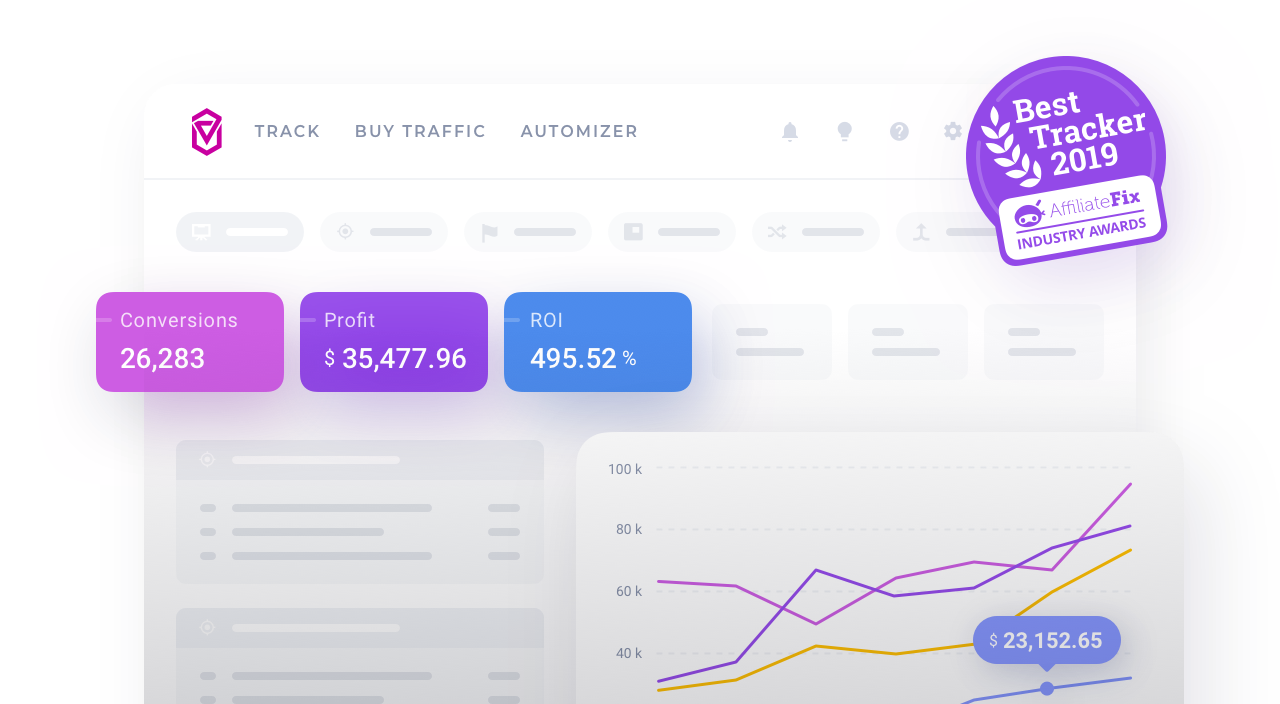Optimization Calculator
What is Optimization calculator?
The Optimization Calculator feature provides you estimations about potential element profitability, based on gathered data. With this feature you can learn:
- Which elements of your campaign (such as countries, browsers, devices and so on) are projected to be the most profitable.
- What is the projected ROI of a given element with the suggested weight value set, calculated within a 95% credible interval.
With this information, you can adjust traffic targeting settings in your traffic source platform.
How Does It Work?
Optimization calculator takes into account the visit and conversion data to estimate the likelihood of being the best of each selected element using the Bayesian statistical approach. For this to work, you need:
- An active Voluum campaign.
- A sizeable sample of data. The more data you have, the more accurate predictions are.
Once you have collected your data sample, you can run calculations.
Using the Optimization Calculator
In order to use the Optimization calculator, perform the following steps:
- In Voluum, go to the Campaigns view.
- In the Campaigns view select the campaign that you want to analyze by clicking it and click the Report button. A specific report will open in a separate tab.
- Select a report category with elements that you want to analyze. In the following example, the Device brand category has been selected.
- Select a time range that you want to analyze data for.
- Select the checkbox on top of the table to choose all elements or select at least one element by ticking a checkbox next to it. The Optimization calculator button will show up in the menu above the report table.
-
Click the Optimization calculator button on the right-hand side. The Optimization calculator pop-up window will show up.

Understanding the Optimization Calculator
In the Optimization calculator pop-up window, you can see the following information:
-
Comparison parameter: You can select which parameter is used as a basis for calculations. You can select between the following parameters:
- Return On Investment (ROI)
- Earnings Per Visit (EPV)
- Conversion Rate (CVR)
- Likelihood of being best: Likelihood values that suggest how to distribute weights among displayed elements to get the best conversion rate.
- Estimated ROI / EPV / CVR: Based on the input data, there is a 95% chance that the comparison parameter will be within a given range.

In our example, an unrecognized OS and OS X convert the best.
Putting the Data From Optimization Calculator to Use
When you know what categories of your audience have the potential for the highest conversion rates, you can use your traffic source's targeting options to buy more profitable traffic. For example, in Zeropark, you can exclude an element predicted to be least profitable (in our example, it's iOS) from the traffic you buy. In order to do so, edit a Zeropark's campaign settings and uncheck the box with an OS that you don't want to buy traffic from:

Frequently Asked Questions
Have more questions about Optimization Calculator? You might find the answer below:
Is there any limit of entities that can be compared and analyzed?
Yes, there is. You can select a maximum of 20 entities in the report. For example, if you want to compare in which browsers a display of the ad is the most successful, you can select the Browsers option in the report. Voluum collects information about a wide range of browsers and in this case you can analyze up to 20 of them in one Bayesian diagram.
Why should I select a visit timestamp in Voluum settings while analyzing data?
Reporting by a visit timestamp might be crucial for analyzing data in a short-term period, particularly when your conversions are registered some time after the visit.
Let’s take a look at the example: One day 10 000 visit were registered. The next day there were only 100 visits, but 1000 conversions were registered from the previous day. In that scenario, if you had reporting by conversion postback enabled and were checking the data selecting the Yesterday option from the time range in a Campaign report, you would see 10 000 visits and no conversions. You might conclude that the offers did not convert at all. If you changed the time range to Today, you would have 100 and 1000 conversions what might indicate that the conversion rate would be 100%.
In the same scenario, with visit timestamp reporting enabled, if you check the data within the Yesterday time range, you will see 10 000 visits and 1000 conversions, so the data you can act upon.
What about dynamic values such as payout on the affiliate network side and cost on the traffic side while optimizing campaigns?
In the Bayesian approach the estimated values of ROI and EPV are calculated based on the average value of the payout.


